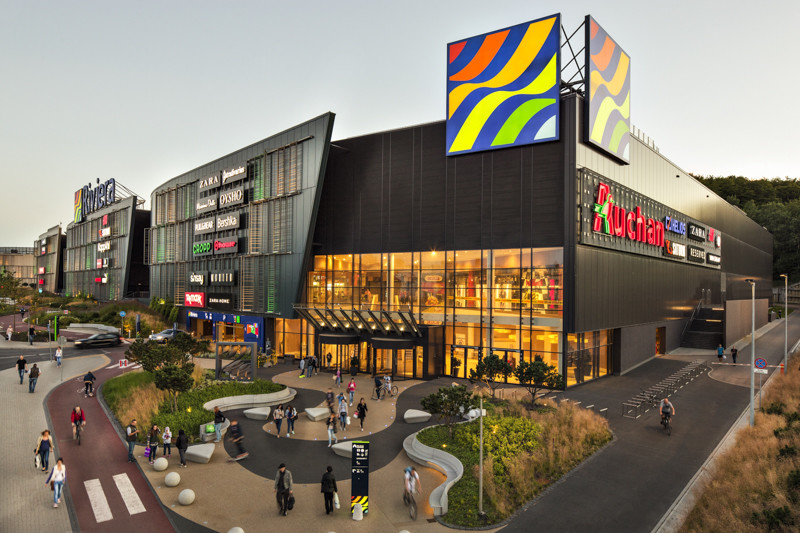Welcome to our interview series, where we explore the insights of industry leaders. Today, we are delighted to speak with Agnieszka Mielcarz, Asset Management Director at Mayland Real Estate. In this interview, Agnieszka discusses how the COVID-19 pandemic, inflation, and the global political situation have irreversibly transformed the commercial real estate market. She sheds light on changes in shopping habits, the evolving landlord-tenant relationship, and the increasing importance of technology, data and non-rental revenues. Agnieszka also shares her vision for the future of shopping centers and the strategies needed to adapt to these unprecedented times.
Don’t miss this in-depth conversation to understand the challenges and opportunities facing the sector today.
Malls Interview – Role of data in shopping centers
First of all, analyze the current situation… How are you living it?
Commercial real estate has been affected by three elements that have irreversibly changed the face of this market. From a global common denominator perspective, we are talking about Covid, inflation, and the political situation. For the latter two areas, the impact varies significantly depending on the geographical area and its dependence on energy resources.
All the Covid-related restrictions we faced for over two years have completely changed customer shopping habits, the landlord-tenant relationship, the concept of anchor tenants, and the sources of revenue from commercial properties. Locality and the creation of 15-minute city spaces have redefined reach zones, and the circular economy is increasingly becoming part of shopping centers.
The change in shopping habits occurs in the manner and type of purchases, which are no longer family outings but targeted visits, usually solitary. When we do have visits with company, it involves seeking shoppable entertainment, where shopping is done “incidentally”. Shopping centers have also fallen from the pedestal of family-friendliness, which they all aspired to, and the importance of anchor tenants has shifted from hypermarkets and clothing chains to entertainment and broadly defined outlet concepts.
Inflation and the political situation have entirely changed the distribution of consumer spending, where conventional fashion has lost significance, while entertainment, services, specialty goods markets, and “investment” spending (interior furnishings) have gained. On the other hand, as always during a crisis, there is also the “lipstick effect,” which means an increase in overall spending volume as a compensatory effect against reduced purchasing power, preventing larger purchases.
As landlords, we have also had to deal with building property value from non-rental revenues, referred to as “non-GLA income”, which will increase in importance in the near future (turnover rent, services for tenants and center users). These elements form the survival plan, but it is a short-term strategy for today; tomorrow will be entirely different.

What is the biggest problem or weakness that a shopping center has to face?
At present, we are facing several challenges. Even if we respond to the changes related to the factors mentioned earlier, we still struggle with format mismatches, the ambition to meet everyone’s needs, sticking to traditional offer layouts, clinging to the belief in the necessity of being family-oriented, and communication with our customers in both BTC (business-to-consumer), which is mass, and BTB (business-to-business).
What role does technology play? How does it help a Shopping Center in the current situation? Would you highlight any in particular?
Technology does not help but is an integral part of our daily lives. It is a way to shape appropriate and individualized communication with the shopping center customer and offer them a personalized experience. This is an aspect I would particularly like to highlight. It’s not about replacing or eliminating physical interaction but about properly preparing touchpoints and offering the customer a service they are interested in at the time they need it. For the business customer, it also allows for appropriate service. The key here is knowledge of their needs without violating sensitive areas.
Technology can also appropriately shape the relationship with our tenants, and the data that will enable better communication with the customer becomes an additional income for the landlord.
How do you achieve customer loyalty now? What do you think this customer is looking for? How can we offer them an optimal experience?
We must accept one fact – the shopping center customer is not loyal. I would prefer to replace this goal with another: increasing visit frequency and dwell time. But only if we can meet their needs, not create them. We are currently dealing with a conscious consumer, and rewarding them for shopping is nice but not effective. The key element of this process is collecting and gathering appropriate data and personalizing the offer.
An important role in this process is the integration of the facility with the local community, creating a place where the non-shopping goals of specific groups can be achieved, and… incidental shopping. Of course, this is a generalization as it does not apply to so-called power centers or facilities with a specialized offer.
The biggest problem and opportunity is the response of shopping centers to ongoing social changes and their proper preparation, planning their future. Key to this will be the integration of urban design within these large properties, perhaps even allowing for the integration of housing to create appeal and make it possible for businesses to survive, creating living environments with a certain synergy with consumers’ lifestyles so that these locations do not become deserted.

Are you optimistic about the future of this sector? What do you think the mall of the future will be like?
“The best way to predict the future is to create it”
(Peter Drucker)
We must prepare a long-term plan that we will start implementing now, beginning with re-identifying what customers need, considering safe spaces and socially responsible solutions.
Shopping centers have always been and will continue to be, but their form must change. We will have to think about urban design, integration with the urban fabric, and adapting the offer to our customers’ lifestyles. In today’s rapidly changing digital landscape, technology is revolutionizing every aspect of our lives, and the retail industry is no exception. The traditional brick-and-mortar shopping experience is being transformed by innovative technologies, creating a more personalized, efficient, and engaging customer journey. From the integration of artificial intelligence and augmented reality to the emergence of mobile commerce and contactless payments, the future of retail offers endless possibilities.
What we shape today will be our future.







